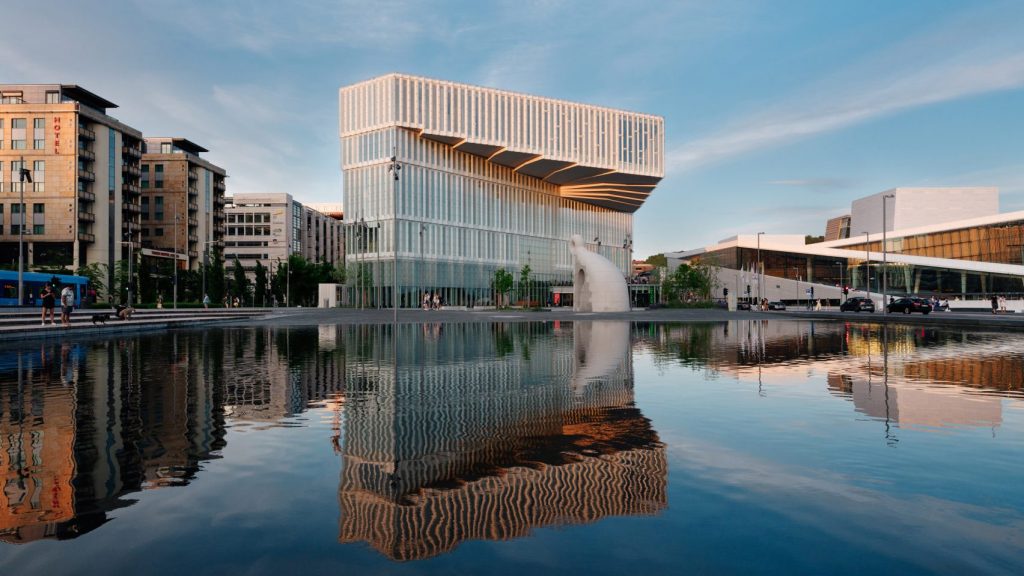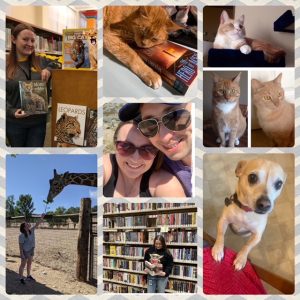For assignment X, I’d like to explore a very divisive transition my library is currently going through and relate it to topics from class and outside readings. It’s clear that libraries must change with the times. This can mean changing the physical spaces of the library, having a stronger online presence, roaming librarians with moveable desks, etc. “Libraries for the people” is a concept that I feel many libraries are working towards, including the library system I work for.
Essentially, upper management in my library system has decided to implement a major re-haul of the children’s areas in all the libraries in the system. Small playgrounds, educational structures, and interactive activities are going to be installed. The goal is to teach families the importance of using play as a method of learning. This update will come at the cost of 50% of our collection. 50% of our material must be eliminated to make room for these changes. This decision has caused rifts between upper management and the employees who actually work in the libraries and want to keep our items available for our patrons. This upcoming change in our library spaces has piqued my interest in other libraries doing something similar. I’m hoping that looking into the great changes libraries are making will make me feel better about the loss of books at my library.
Libraries aren’t just buildings that house books anymore. Libraries today can now have tech centers, cafes, playgrounds, media centers, and more. Saskia Leferink (2018) points out, “the way a physical space meets the needs of individuals in specific user groups is key.” It’s important to have a space for everyone (quiet spaces, collaborative spaces, teen spaces…).
An article in Library Journal describes some of the fun and innovative ways libraries are using their spaces. A library in Texas is building a creativity space with a kitchen that will be open to the public even when the library is closed, a video production room, a train for kids to ride, a pretend restaurant, and a veterinary center (Pierce, 2021). The article also mentions libraries using mobile shelving and raised floors that can accommodate changes to the physical space and power distribution.
Redwood City Public Library opened up a makerspace in 2022 that includes 3D printers, modeling and design software, sewing machines, crafting tools, whiteboards, screen monitors, and reconfigurable tables and seating (Peninsula 360 Press, 2023).

The entrance to the Makerspace at Redwood City Public Library. Photo: P360P
When making big changes, it’s good to have transparency between all employees and invite those who don’t work directly in the library to visit the space. There should also be communication between everyone involved. According to Michael Casey and Michael Stephens (2007), “the transparent library’s fluid nature and open communication allow all levels of staff to understand what it takes to meet user needs.”
Ultimately, change in libraries is inevitable and should be for the best of the community. Teams should work together to transform libraries into what the community needs and work towards a common goal. This can mean having an open mind and trying new things. Here’s to the evolution of libraries!
References
Leferink, S. (2018, January 24). To keep people happy… keep some books. OCLC. https://blog.oclc.org/next/to-keep-people-happy-keep-some-books/
Peninsula 360 Press. (2023, May 7). Makerspace celebrates its first anniversary at the Redwood City Library. https://peninsula360press.com/en_us/makerspace-fulfills-its-first-anniversary/
Pierce, D. (2021, November 8). New library design: Spaces that connect, cultivate, and transform communities. Library Journal. https://www.libraryjournal.com/story/new-library-design-spaces-that-connect-cultivate-and-transform-communities
Stephens, M. & Casey, M. (2007, September 15). Going to the field. Tame the Web. https://tametheweb.com/2007/09/15/going-to-the-field/




